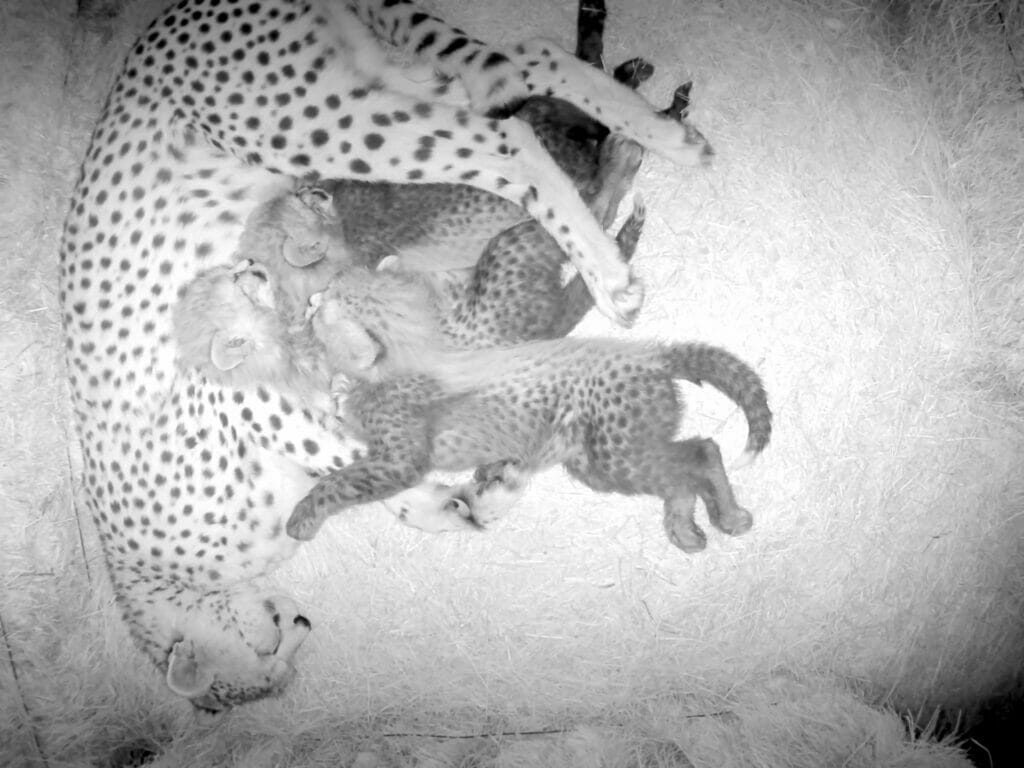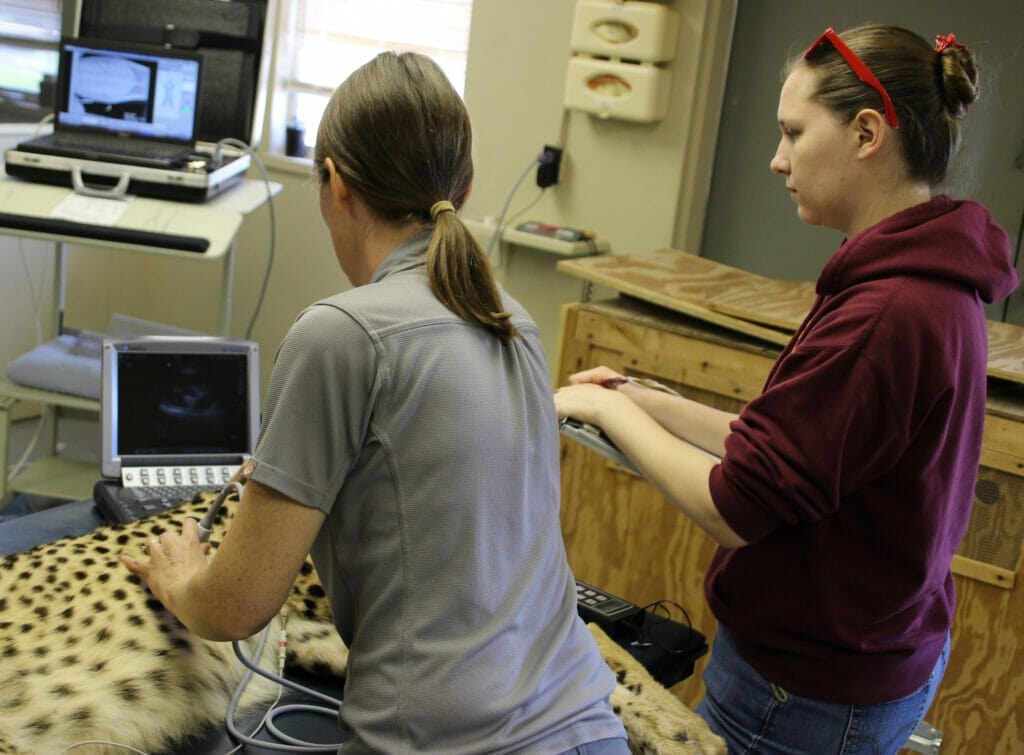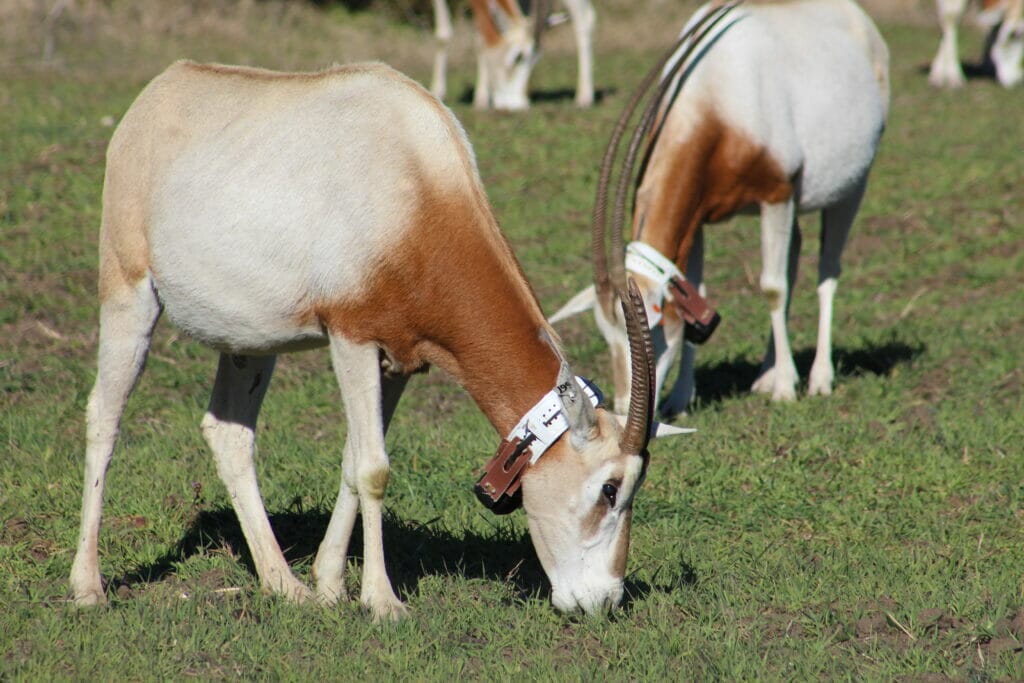Conservation is not a new concept, and despite some stereotypes, it’s not all about rejecting modernity. Modern conservationists believe in protecting the world we have today and restoring a balance between ourselves and nature. Believe it or not, conservation is an ever advancing science that relies heavily on technology to reach new goals. The tools and tech we use help us interact and care for land and animals while minimizing our footprint. Technology plays a crucial role in the conservation of today, and, perhaps more importantly, the conservation of the future.
So what does this technology look like in practice? At Fossil Rim, we’re constantly updating our methods to ensure our species receive the best and least disruptive care possible. We also play a part in the research and development of tools that are used in conservation worldwide.
Let’s break down some of the technology conservationists use to make their jobs easier and even more effective.
Keeping Watch
Although the species at Fossil Rim are familiar with humans, we do everything we can to preserve their natural instincts. This actually means interacting with them as little as possible, and never treating like pets or domesticated animals.

One of the ways we can do this is through the use of cameras. Mounted cameras and trail cams installed in barns and yards are a great way to check in on animals. They also allow us to do things like observe births without interference and keep an eye on any young or ill animals. While we do intervene when necessary, there are times—like when a mother is bonding with her newborn—that our presence can be stressful. Cameras are the perfect way to keep an eye on them without changing their natural behaviors.
A Population Boost
The amount of critically endangered species today has skyrocketed. This means organizations like ours are working even harder to help increase population size. With the help of advancements like IVF, specialized x-ray and ultrasound equipment, we can keep both moms and babies safe. This is especially important for species that have a difficult time breeding on their own, like cheetahs.
In 2020, Fossil Rim’s Animal Care and Animal Health teams took part in a project along with the Smithsonian Conservation Biology Institute, the Columbus Zoo and several other partners to perform in vitro fertilization and embryo transfer with cheetahs.

Although in vitro fertilization might be something you’re familiar with, it’s not quite as easy to perform on animals as it is on humans. Not to mention, captive cheetahs must be rigorously evaluated to ensure they’re genetically viable before they’re able to reproduce. This project means that cheetahs who are not quite as fertile as others may still be able to have healthy cubs with intervention.
Cheetah numbers are incredibly low, with less than 9,000 total individuals in the world. This makes every new litter of cubs born a victory. Each year technological advancements like this are making it easier to produce litters in facilities around the world.
A Hand in the Wild
The work we do here at Fossil Rim doesn’t end at the edge of our property. Making a global difference with what is learned here is always our end goal. We want to see species thriving in the wild, and ecosystems flourishing. One of the ways we do this is by participating in species reintroduction programs with a few of our conservation partners. These programs not only help put native species back into their natural habitats, but track them. This allows us to continue to protect and learn from them.

Beginning in 2015, Fossil Rim began a research project to aid in the release of scimitar-horned oryx, a species still listed as extinct in the wild, back into their native habitat in Chad. In order to release these animals, functional GPS collars would need to be created and fitted to the individuals without interfering with their natural behaviors. Fossil Rim intern Stephanie Cunningham observed our own oryx population with and without collars in order to understand their impact and minimize negative effects. These results had direct application in Chad, where scientists were able to choose the best collars to help track wild populations.
This project is a great example of technology aiding conservation. Scientists and researchers utilize GPS tracking across the world to keep track of wild and semi-wild species.
Endless Possibilities
The tech mentioned here is barely a drop in the bucket of technology being used in the conservation field today. In fact, we could have dedicated a whole blog to just one of these tools. The incredible thing about technology is that it allows us to continue our work of protecting the future of species in ways that are less invasive while still being effective. Things are always advancing, but in the end, preserving the natural way of things (and maybe giving it a boost) is always the best method for ensuring the future of our world.

